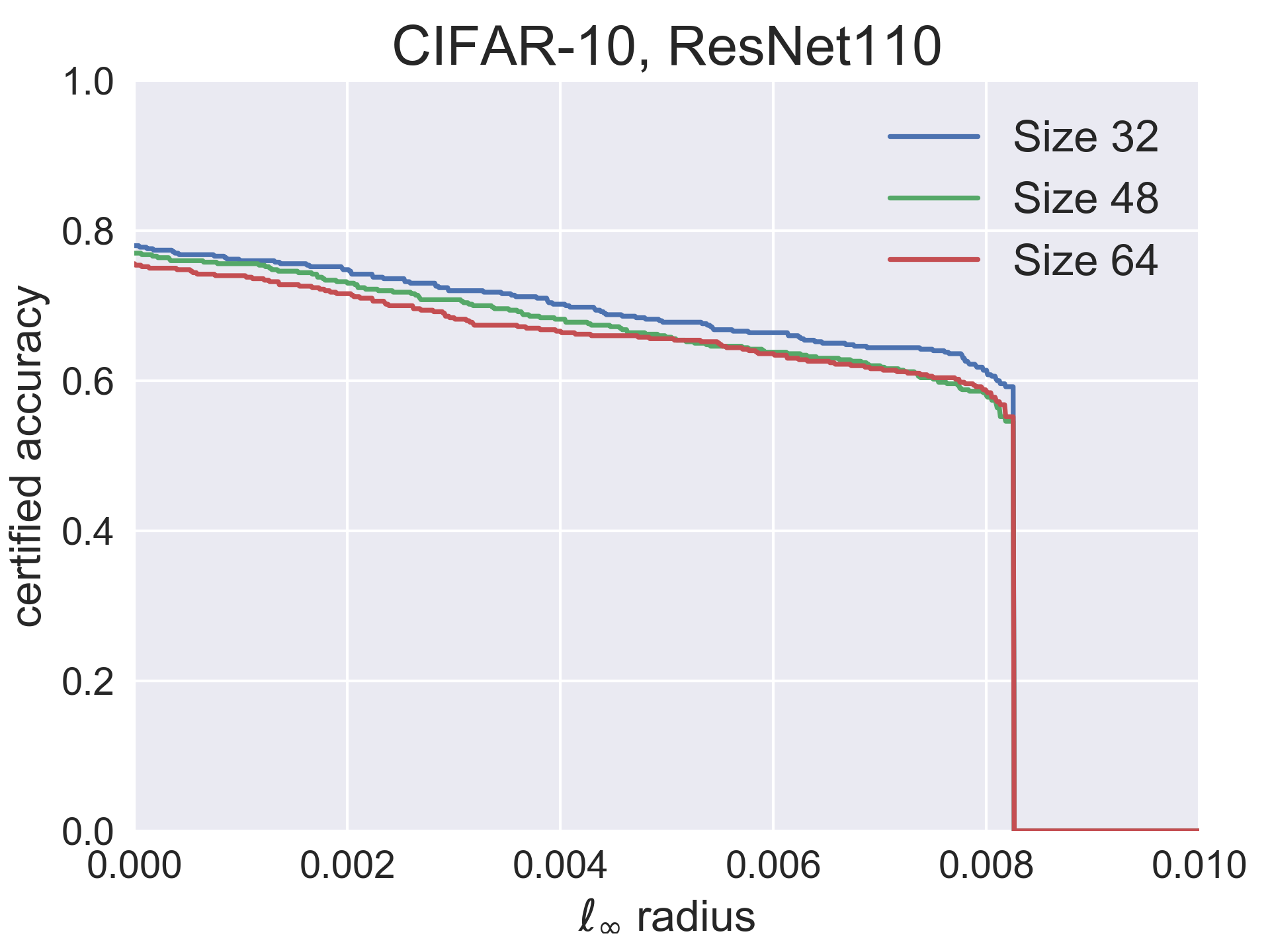Random Smoothing Might be Unable to Certify $\ell_\infty$ Robustness for High-Dimensional Images
We show a hardness result for random smoothing to achieve certified adversarial robustness against attacks in the $\ell_p$ ball of radius $\epsilon$ when $p>2$. Although random smoothing has been well understood for the $\ell_2$ case using the Gaussian distribution, much remains unknown concerning the existence of a noise distribution that works for the case of $p>2$. This has been posed as an open problem by Cohen et al. (2019) and includes many significant paradigms such as the $\ell_\infty$ threat model. In this work, we show that any noise distribution $\mathcal{D}$ over $\mathbb{R}^d$ that provides $\ell_p$ robustness for all base classifiers with $p>2$ must satisfy $\mathbb{E}\eta_i^2=\Omega(d^{1-2/p}\epsilon^2(1-\delta)/\delta^2)$ for 99% of the features (pixels) of vector $\eta\sim\mathcal{D}$, where $\epsilon$ is the robust radius and $\delta$ is the score gap between the highest-scored class and the runner-up. Therefore, for high-dimensional images with pixel values bounded in $[0,255]$, the required noise will eventually dominate the useful information in the images, leading to trivial smoothed classifiers.
PDF Abstract

